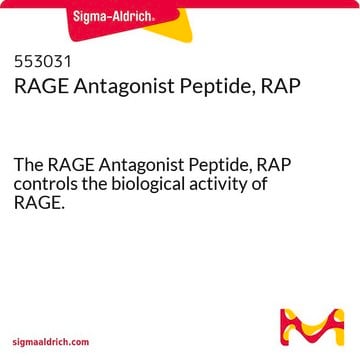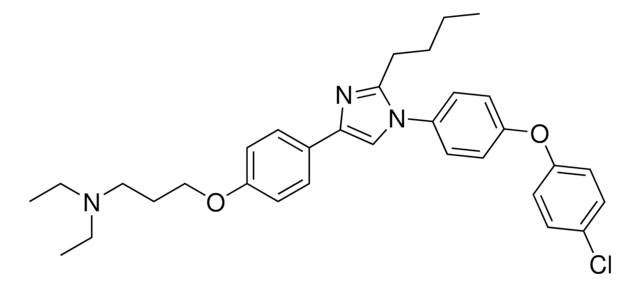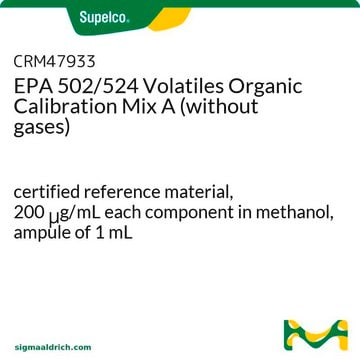553030
FPS-ZM1
≥98% (HPLC), semisolid,viscous liquid, RAGE antagonist, Calbiochem®
Synonym(s):
RAGE Antagonist, FPS-ZM1, Receptor for AGE Antagonist, FPS-ZM1, N-Benzyl-4-chloro-N-cyclohexylbenzamide
About This Item
Recommended Products
product name
RAGE Antagonist, FPS-ZM1, RAGE Antagonist, FPS-ZM1, is a blood-brain-barrier permeant blocker of RAGE V domain-mediated ligand binding (Ki = 25, 148, & 230 nM, respectively, against Aβ40, HMGB1 & S100B, binding to sRAGE).
Quality Level
Assay
≥98% (HPLC)
form
semisolid
viscous liquid
manufacturer/tradename
Calbiochem®
storage condition
OK to freeze
protect from light
color
white to off-white
solubility
DMSO: 100 mg/mL
shipped in
ambient
storage temp.
2-8°C
SMILES string
O=C(C1=CC=C(Cl)C=C1)N(CC2=CC=CC=C2)C3CCCCC3
General description
Biochem/physiol Actions
RAGE
Packaging
Warning
Reconstitution
Other Notes
Legal Information
Storage Class Code
11 - Combustible Solids
WGK
WGK 3
Flash Point(F)
Not applicable
Flash Point(C)
Not applicable
Certificates of Analysis (COA)
Search for Certificates of Analysis (COA) by entering the products Lot/Batch Number. Lot and Batch Numbers can be found on a product’s label following the words ‘Lot’ or ‘Batch’.
Already Own This Product?
Find documentation for the products that you have recently purchased in the Document Library.
Customers Also Viewed
Our team of scientists has experience in all areas of research including Life Science, Material Science, Chemical Synthesis, Chromatography, Analytical and many others.
Contact Technical Service








